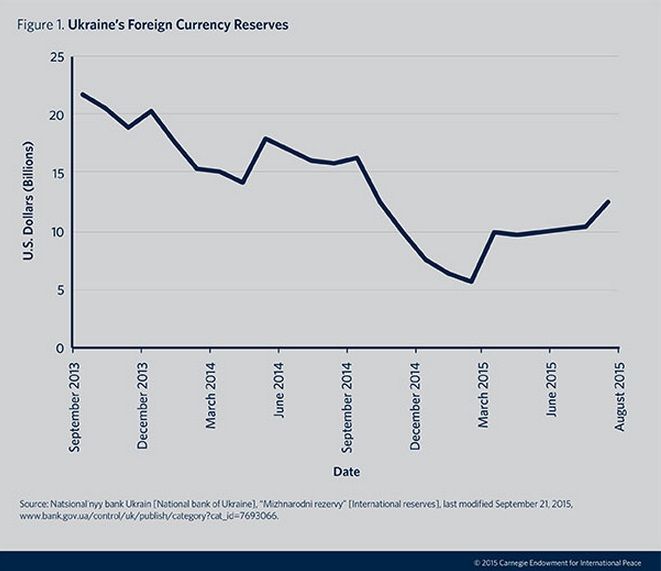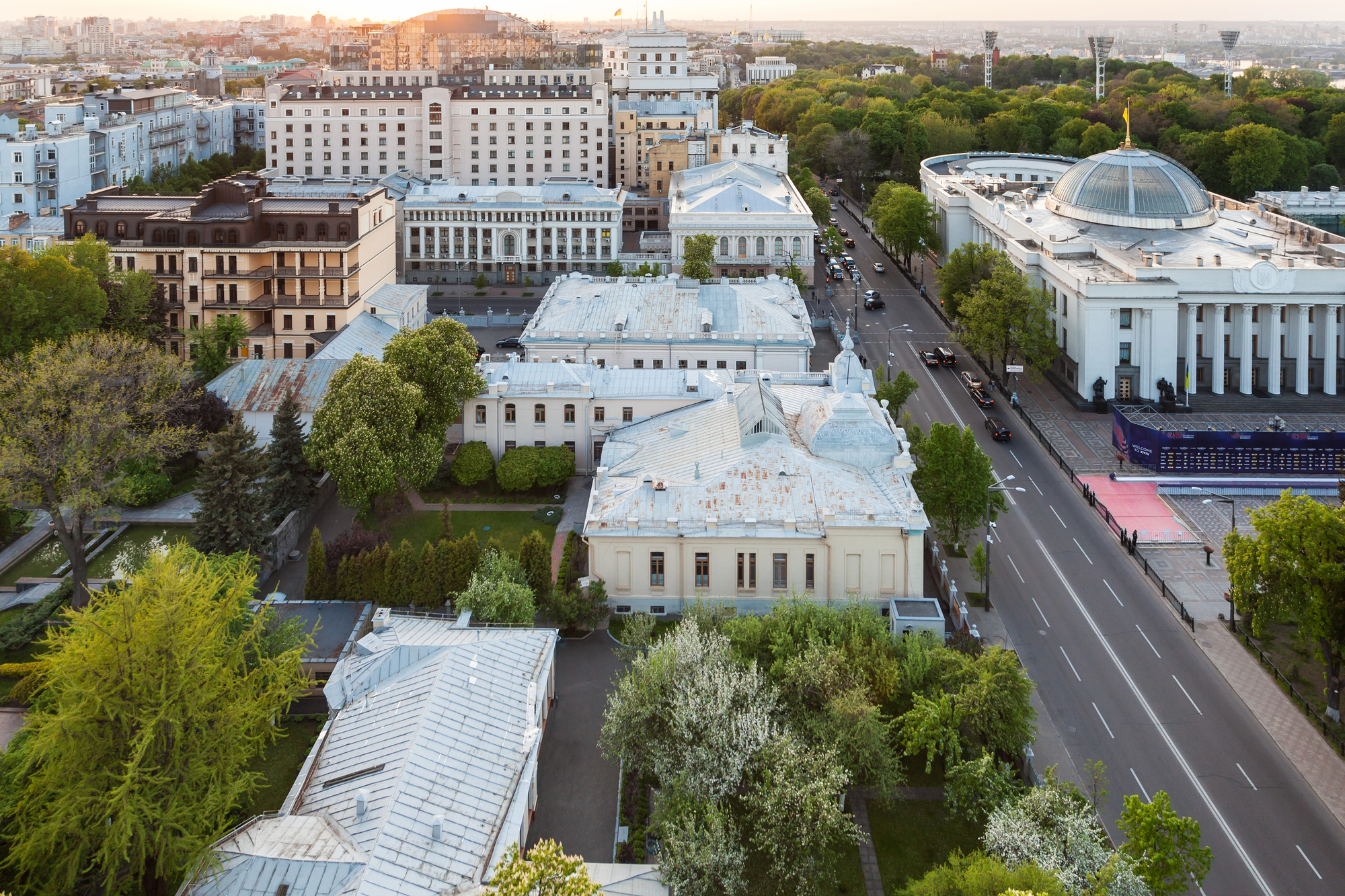The Ukraine Reform Monitor provides independent, rigorous assessments of the extent and quality of reforms in Ukraine. The Carnegie Endowment has assembled an independent team of Ukraine-based scholars to analyze reforms in four key areas. This second memo covers August and September 2015. During analyzed period the Ukrainian government accomplished two major breakthroughs. It succeeded in negotiating a debt-restructuring deal with creditors, and it made progress toward parliamentary approval of a decentralization package.
The first was an unqualified success. The second was a highly controversial event that triggered protests and violence and resulted in several fatalities, reaffirming that constitutional reform will be a difficult challenge for Ukraine. In addition to these major developments, the government used a relative lull in the fighting in eastern Ukraine to advance several less noted but important reforms.
Political and Judicial Reform
Constitutional Reforms
- The main advance in political reform in this period came on August 31, when a constitutional package of decentralization measures passed its first reading in the Rada, or parliament, with 265 votes. The package would give local councils the right to establish executive offices, thereby removing an important barrier to decentralization. Other measures include the granting of equal rights to all local communities and a provision for the president, acting through local representatives known as prefects, to dissolve local councils or overrule their decisions.
- The vote was controversial. Members of radical political movements and civic groups gathered near the Rada to protest the proposed granting of self-administration to communities in Ukraine’s separatist-controlled territories. The protest turned violent, leaving four policemen dead as of this writing; many protesters were injured. The public’s overall reaction to the measures was supportive of the government, though.
- Other groups—politicians, experts, and civic activists—protested in many different forms against the planned establishment of the prefects, whose role would be to ensure the central government’s oversight of local decisions affecting national legislation and security. Members of these groups oppose an increase in presidential power.
- The bill faces an uncertain future, as it needs 300 votes to pass its second reading, which is planned for after the October 25 local elections.
Judicial Reform
- The government is preparing several other constitutional amendments on judicial reform and civil rights. On September 4, a presidentially appointed constitutional commission—composed of representatives of the Rada, the executive branch, the judiciary, academic organizations, and civil society—approved a judicial reform package designed to shield judges from political interference. The package has since been submitted for review to the Council of Europe’s Venice Commission, which had previously approved it in principle.
- Some members of the constitutional commission and public experts from the Reanimation Package of Reforms, a civil society platform, criticized the proposals for not going far enough to limit the president’s and the Rada’s influence over judges. These opponents called on the Venice Commission and members of the Rada to reject the package and provided the constitutional commission with their own set of amendments.
Anti-Corruption Measures
- Legislation on the National Anti-Corruption Bureau was passed; the president appointed the head of the bureau after an open, competitive, and transparent selection process; and 25 special investigators were hired. But the bureau is still unable to begin operations because some key personnel appointments have yet to be made. The Rada has attempted but so far failed to speed up this process.
- The Ministry of Internal Affairs and the Security Service of Ukraine proceeded with their own anti-corruption investigations. Dozens of senior officials, including judges and high-level staff of customs, tax, and social welfare agencies, were arrested on suspicion of corruption. There have been no convictions of officials accused of corruption.
Local Elections
- The parliament introduced new electoral rules intended to improve transparency and voter participation and empower local administrations. The upcoming local elections are generating considerable interest from the public.
- The most sensitive issue is whether parts of Ukraine’s eastern Donbas region controlled by pro-Russian separatists will conduct their own elections, a move which Kyiv has said will destroy the Minsk process. The government in Kyiv insisted that Ukrainian laws and standards be followed in the separatist-controlled communities, and the topic reportedly dominated an October 2 Normandy format summit meeting between the Ukrainian, Russian, German, and French leaders. It is not clear whether the separatists will delay or change their plans.
- The international community pressed for elections to cover the entire territory of Ukraine. The Parliamentary Assembly of the Council of Europe urged the Ukrainian authorities and all stakeholders to ensure “inclusive and pluralistic” local elections with the participation of all political forces. The election observation mission of the Organization for Security and Cooperation in Europe (OSCE) and its Office for Democratic Institutions and Human Rights started work—except in the separatist-controlled territories—on September 10.
Association Agreement Ratification
- The Italian senate ratified the Association Agreement between Ukraine and the EU on September 10. The national parliaments of all EU member states except Greece and Cyprus have now ratified the agreement. (Belgium and the Czech Republic still need to complete a number of formal steps in the ratification process.) Adding some uncertainty, however, the Netherlands announced it will hold a nonbinding referendum on the accord after a Dutch website collected over 300,000 signatures to trigger such a vote.
- The Russian Federation’s position toward the Association Agreement remains hostile. On September 7, trilateral talks in Brussels between the EU, Ukraine, and Russia ended early and without progress.
Economic Policy
- The hryvnia-dollar exchange rate has generally remained stable. In the second quarter of 2015, GDP fell by 14.6 percent year on year and by an estimated 0.8 percent from the previous quarter. Inflation slowed, allowing the central bank to decrease its discount rate by 3 points to 22 percent. The International Monetary Fund (IMF) agreed to deliver the second tranche of Ukraine’s Extended Fund Facility program, equivalent to $1.7 billion.
- In August, the government reached an agreement with major holders of Ukraine’s Eurobond debt to restructure it. The Rada approved the deal. The restructuring includes a 20 percent reduction of the face value of the government’s $18 billion debt, a reset of the coupon rate at 7.75 percent (the weighted average rate of this debt was 7.2 percent), and a four-year increase in maturity. To make the deal more attractive, the government of Ukraine will also issue GDP-growth-related warrants, under which Kyiv will pay investors if annual GDP growth is above 3 percent. Ukraine’s overall debt burden remains relatively high, which could create long-term challenges if economic growth and reforms fail to take hold.
Fiscal Policy
- The Ministry of Finance presented its proposals for a reduction of almost 50 percent in social insurance contributions and a common rate of 20 percent for most of the main types of tax.
- The Ministry of Finance recalled the draft 2016 state budget bill on September 15, ostensibly to rewrite it in line with suggested changes to the Tax Code.
- Higher-than-expected budget revenues resulted in the cabinet’s call for increased public spending in October instead of December, when the minimum subsistence level (and social payments that depend on it, for example the minimum pension) was supposed to rise. The parliament supported this call.
Online Budget Portal
- On September 15, the government launched an online portal with full public disclosure of public financial data. As the first batch of disclosed data, the portal currently gives access to details of all individual transactions on treasury accounts. This is the first stage in the development of the portal; further sections are expected to open in the coming months. This represents a breakthrough in Ukraine’s budget transparency, including in terms of local finances. From 2008 to 2014, the amount of publicly available information on the country’s budget had decreased dramatically.
Banking and the Financial Sector
- The banking system remains fragile: its total losses reached $4.2 billion (4.4 percent of estimated GDP in 2015) in the first seven months of the year. This was mostly due to 40 banks having been declared insolvent since the start of 2015 (bank insolvency incurs balance-sheet losses). The losses of banks still operating amounted to $1.5 billion. Between June and September, the National Bank of Ukraine declared six banks insolvent, including Ukraine’s tenth-largest bank in terms of assets.
- The amount of hryvnia-denominated household deposits fluctuated slightly during the summer and is expected to increase in the fall. Foreign currency deposits held by households continue to shrink because the public lacks confidence in the banking system. The public also fears that the government may resort to inflationary measures and expects the hryvnia to depreciate further.
Inflation Targeting
- A draft monetary strategy prepared by the central bank envisions moving to inflation targeting in 2016, with targets of 12 percent for the financial year 2016–2017, 8 percent for 2017–2018, 6 percent for 2018–2019, and 5 percent for 2019–2020.
Currency Reserves
- The central bank’s foreign currency reserves in August increased to $12.6 billion, up from $10.4 billion in July (see figure 1).

The Energy Sector
- Ukraine’s national oil and gas company, Naftogaz, has not purchased gas directly from Russia since July 1. On September 26, Russia, Ukraine, and the EU reached a preliminary agreement on gas purchases and transportation for the coming winter. The price that Ukraine will pay for Russian gas was set at $227 per 1,000 cubic meters for the fourth quarter of 2015 (in the second quarter, it was $248). The purchase should be partly financed with a $300 million loan from the European Bank for Reconstruction and Development.
State Property
- The Ministry of Economic Development and Trade announced plans to have the 183 largest state companies audited by international auditors. In 2014, state-owned enterprises showed losses of $5.3 billion. Despite the desire of some parts of the government to sell off these assets quickly, privatization of large enterprises such as the Centrenergo energy company and the Odessa portside chemical plant has stalled, allegedly because of opposition from vested interests. The State Property Fund announced that it was ready to sell these two entities in December if the cabinet adopted the rules for their sale in time. The Rada is expected to approve a list of state-owned enterprises for privatization soon.
Deregulation and Improvement of the Business Climate
- Several government decrees and laws passed by the Rada are intended to advance deregulation. They include the reduction of the term for phytosanitary and quarantine certificates from five days to one day, the easing of transfer pricing, a new law on animal identification, a law on the list of 28 licensing authorities, a resolution on pre-privatization reviews of enterprises, and the simplification of the procedure to obtain permits for dredging at seaports.
- Changes in the areas of public finance, governance, and anti-corruption designed to improve the business climate included the cancellation of taxes for nonprofit organizations, changes in the Tax Code aimed at reducing the tax burden on businesses, and the simplified registration of foreign companies.
National Security
- The fighting in eastern Ukraine subsided, and the focus shifted to domestic problems such as smuggling and corruption.
Security Challenges
- The fighting fell to its lowest level since the start of the conflict. On September 1, after two unsuccessful attempts, the parties to the conflict met a new deadline for a ceasefire and on September 29 agreed to withdraw tanks, artillery, and mortars of up to 120 mm from the line of contact. However, the OSCE reported sporadic ceasefire violations in territories controlled by both the Ukrainian government and the separatists.
- Smuggling across the line of contact with the occupied territories continues to be a security threat. In early September, a monitoring mobile group came under fire from Ukrainian forces reportedly on Ukrainian territory; two members of the group were killed and four wounded. The attack was allegedly prompted by the group’s active enforcement of measures to eliminate contraband.
- Ukrainian President Petro Poroshenko approved a new list of sanctions against 90 Russian companies and 400 individuals implicated in Russia’s occupation of Donbas and its annexation of Crimea. The move included a controversial ban on major Russian air carriers Aeroflot and Transaero.
Defense
- The presidential administration published a new edition of the military doctrine. The doctrine identifies Russia’s “temporary occupation of Crimea” and aggression in the eastern Donetsk and Luhansk regions as the “current military threats” to Ukraine. The document also cites as a threat “illegal armed formations” whose actions are destabilizing the domestic situation in Ukraine.
- There were several new developments in Ministry of Defense reforms. The ministry began to implement new, more transparent procurement practices. It moved its procurement procedures to an online system, increasing the number of competitive bids for defense contracts and saving $3 million since the new system was introduced in the summer. The ministry appointed a new, reportedly highly qualified team to its reform office, in a move that is expected to accelerate the reforms.
Ministry of Internal Affairs
- The Ministry of Internal Affairs continued to make progress in building a new patrol force. After a successful launch of the Kyiv patrol police, the cities of Lviv and Odessa were given their own forces in August, and Kharkiv followed suit in September. Public reception of the patrol force has been positive.
- Ukraine’s Internal Affairs Minister Arsen Avakov announced an open call for similar forces to begin work in thirteen more large cities across Ukraine by the end of September. The initial plan was to cover major cities first and then to slowly introduce the forces in smaller cities; now the process has been accelerated, with the new police to be recruited in more than twenty cities by the end of the year.
General Prosecutor’s Office
- The General Prosecutor’s Office launched a selection process for prosecutors in newly created local offices. In addition, 5,400 applications were received for 700 managerial vacancies. Professional testing of prosecutors began. As a result of these changes, the number of local prosecutors will be cut by 30 percent. The government introduced a mechanism for public oversight of the recruitment process.
Security Service of Ukraine
- The Security Service of Ukraine stepped up anti-corruption efforts in its own ranks. Over the last two months, sixteen of the service’s employees were detained, including six from the Kyiv headquarters. Further clampdowns followed against high-level officials in other agencies, including the head of the State Employment Service of Ukraine, who was charged with corruption.
Decentralization
Community Amalgamation
- Most oblast councils approved plans for community amalgamation, a process required to establish viable self-governance units instead of the current fragmented network of villages and settlements. As a consequence of the reorganization, the total number of communities is expected to fall from 11,000 to 1,500. At least 159 of the newly amalgamated communities will elect their first councils in October. New communities were allowed to choose their councils without seeking approval from oblast councils.
Property Tax
- Within the framework of much-debated tax reforms, the central government proposed expanding the local property tax base by narrowing current exemptions to commercial property, warehouses, and luxury flats. However, local governments would retain the right to reestablish exemptions if they wished. The property tax, introduced in 2015, has brought in a revenue increase of only 0.3 percent for local budgets, because exemptions reduce the tax base.
Support for Local Budgets
- The central government provided stabilization grants to communities that have experienced particular stress since the introduction of a new fiscal equalization mechanism.
Reforms in the Decentralized Sectors
- The health, education, and social policy ministries began to develop sectoral reforms to improve the funding and administration of their key delegated programs. These reforms are intended to address the mismatch between decentralized funding and centralized sector regulation, introduce input-based budgeting, and eliminate conflicts of interest in service delivery. Working groups produced initial ideas for changes, but no agreed upon vision or detailed road map has been reached in any of these fields.
Overall Assessment
- The constitutional reform process dominated the debate in August and September, and remains the subject of major controversy. Supporters of the process view the changes as a significant step forward as well as a major rallying point for all reformers. Opponents fear that the process has been too top-down and has not included sufficient consultation with civil society and the general public. Opponents also note that debates about the new constitution threaten to fracture and weaken the pro-reform governing coalition. The outcome of the reform process remains uncertain, and a broad consensus on key issues could prove elusive. During August and September, the stage was set for a defining political struggle over decentralization.
- The debate between proponents and opponents of reforms continues even in areas where there has been progress. The bureaucracy remains entrenched and opposed to reforms.
- Low-level reforms have undoubtedly made progress. Nonetheless, the government suffers from widespread perceptions of poor communication and coordination among the many agencies engaged in the process of preparing constitutional reforms. Despite the growing scale and scope of reform activity and increasing support for it, the overall effort appears to be suffering from a lack of strategic direction.
Attention
The author doesn`t work for, consult to, own shares in or receive funding from any company or organization that would benefit from this article, and have no relevant affiliations


